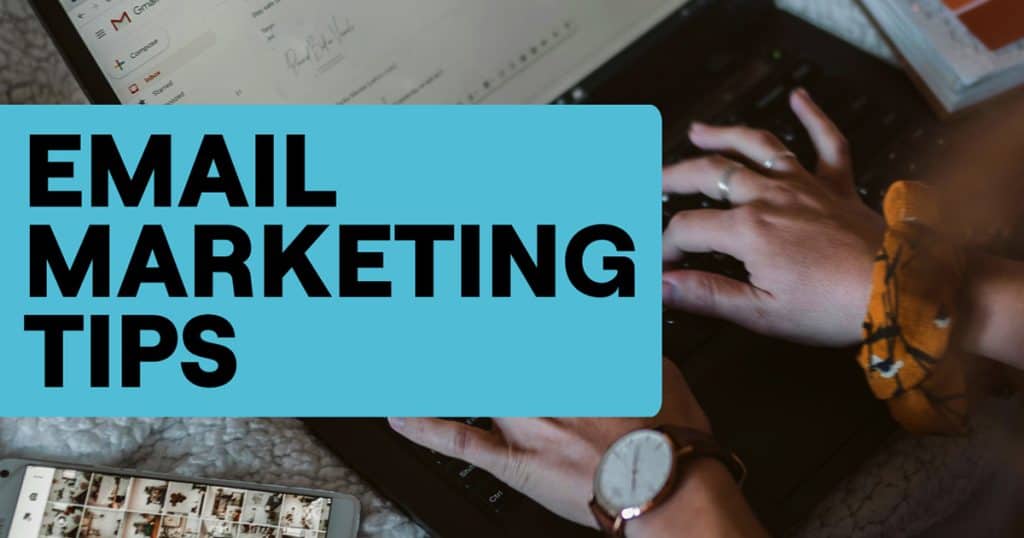Artists, Use These Tips to Get Started With Email Marketing
Email newsletters are one of the most high-converting tools an artist has at their disposal. Here’s a helpful guide on how and why your email marketing strategy should come first.

Artists, Use These Tips to Get Started With Email Marketing
By Ryan DiLello of CD Baby’s DIY Musician Blog
Why does email marketing matter for artists?
Email marketing gives you a direct line to your fans on your own schedule and your own terms. While social media is great for getting seen, you don’t own your audience. Whether your posts even show up in someone’s feed depends on ever-changing algorithms.
With email, your message goes straight to your fans’ inboxes, where you can share links, media, and a full message in your own format.
In this blog, we’ll share tips and best practices to help you grow your fanbase using email marketing. If you haven’t started your email list yet, read our guide to help you get up and running.
Understanding email marketing within your marketing strategy
Social media algorithms provide unique and valuable paths to exposure, but you’re always playing a game of chance. No matter how important your content is within a post, visibility ultimately relies on engagement metrics — which are difficult to always optimize for across content types. This can become a problem when you’re trying to share urgent artist news or looking to activate your fanbase around an upcoming milestone. Oftentimes reaching all your followers on social media requires multiple posts in different formats over a period of time. That’s where email can offer a more direct line of communication.
And remember, email isn’t just for announcements. It’s a powerful tool for fan retention. Through regular, engaging newsletters, you can stay top-of-mind, deepen fan relationships, and provide real value over time.
Key Takeaways:
- Use social media to attract new fans
- Use email to retain and activate your core audience on demand
- Email is especially great for sharing urgent updates with your core audience
Build your email list
Assuming you have an email management platform or at the very least, an artist email, you’ll want to take steps to build your email list. Promote your email list by meeting fans where they are across channels and incentivize signups with rewards and tangible benefits.
- At live shows: Set out a clipboard, QR code, or iPad for fans to sign up (offer a free sticker or download in exchange).
- On social media: Post about your list and incentivize signups with perks like early access to merch, music, news, and exclusive discounts.
- On your website: Embed an email signup form on your homepage or link in bio.
- In your Linktree / smart link page: Include “Join my email list” as a top link.
- During music releases: Gate early access to a track or video behind an email opt-in.

What should I include in my emails?
Make your emails exciting, actionable, and exclusive so readers feel like part of a club that gets the inside scoop. You can announce new music, tour dates or one-off shows, merch drops, and plans for recording. But balance promotion with content that invites a reader into your world. Mix in personal updates, music you’re listening to, upcoming plans, and stories from behind the scenes to make the emails read more like personal letters to your fans than direct-marketing advertisements.
How often should I send emails to my fans?
Consistency matters more than frequency, especially when you’re starting out. A monthly email is typically a great way to start and leave room for the occasional one-off email around upcoming shows, merch drops, or timely content. Avoid spamming your audience. If you don’t have an exciting announcement to plug every month, the occasional lifestyle email that’s more a summary of what you’ve been up to, listening to, and planning can be just as useful in keeping fans engaged.
Email best practices for musicians
Similarly to social media, fans want to engage with media that represents you authentically. That means you don’t need to be a professional copywriter or marketer to write a captivating newsletter — you just need to be authentic, clear, and demonstrate that you understand your fans.
Here are a few best practices to follow:
- Use a clean, mobile-friendly design. Most people check email on their phones.
- Keep your emails short and reader-friendly. For longer emails, use headers to organize content in sections.
- Include clear and enticing calls to action. Link directly to your music, merch, or event page in bolded text or designed buttons (depending on what your email solution allows).
- Use segmentation where appropriate. Tour announcements can go to a full email list, but send hometown shows or other location-specific promotion to a relevant list.
- Track performance. Use your email platform’s analytics to learn what subject lines or content formats work best.
Setting up an automated welcome email
Sending an email per month is a great cadence for contacting your entire email list, but you can expect to receive signups at any time and you don’t want new signups to have to wait until the next mass send. Additionally, new signups may need some introduction to your email list: what can they expect, how often can they hear from you, how can they get to know you better? That’s where an automated email welcome flow can help.
What is an automated welcome email?
You can set up an automated email to send as soon as a fan joins your list. This welcome message is a great opportunity to thank them for signing up, share key links to your music, website, upcoming shows, or merch, and let them know what kind of content they can expect from your future emails.
You will need to work with an email marketing platform to create an email flow. More information on how to get started here.